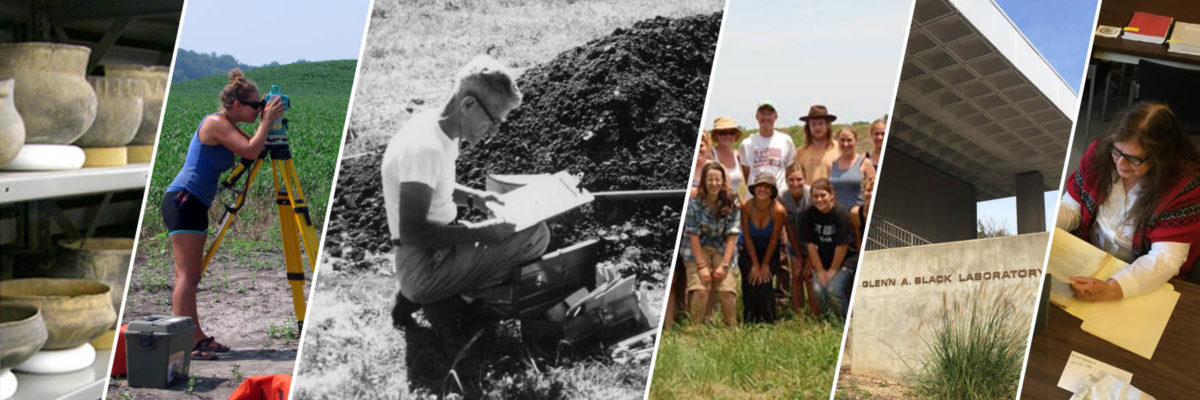February 15, 2017
by Hannah Rea, Social Media Intern
All photos from collection donated by Glenn A. and Ida Black family, unless otherwise cited.

1900:
Glenn Albert Black is born August 15, in Indianapolis, Indiana. He attends public school through high school, then is forced to take on the role of head of household after the death of his father, John A. Black, in 1912.
1920s:
Black begins to amass a collection of artifacts from prehistoric sites in Marion County, and studies the history of the state.

1930:
In the fall, Black writes to Dr. C. B. Coleman, the director of the Indiana Historical Bureau, asking if his services would be accepted “if they were offered gratis.”
1931:
The company he had previously worked for as an estimating engineer –Fairbanks, Morse and Company– moves to Wisconsin and Black is forced to resign his position in order to stay in Indiana and support his family. In May, Black is hired to serve as a local guide to Warren K. Moorehead, who helped create archaeological programs for the study of the eastern part of the United States, as well as Eli Lilly and E. Y. Guernsey as they conduct an inspection of Indiana archaeological sites.

On October 27, he marries Ida May Hazzard.
1931-32:
Black is recommended by Moorehead to be sent to Greene County and begin surveys there. In the winter, he is sent to Columbus, Ohio, to study collections at the Ohio State Museum and do further field excavations.
1932:
Black returns to Greene County in the spring for further excavations in conjunction with the Indiana Historical Bureau.
1933:
Black assists on a survey of Dearborn and Ohio counties, recording sites such as the Nowlin Mound.
1934-35:
Excavations begin at Nowlin Mound.

1936-37:
Black turns his attention to the excavation of documented villages, believed to have been inhabited by Miami, Shawnee and Potawatomi people during the seventeenth and eighteenth centuries.

1938:
The Indiana Historical Society acquires the Angel Mounds site with assistance from Eli Lilly to protect and preserve it for future research and education.

1939:
Black moves into a house on the property.
Excavations under the Works Progress Administration employ more than 200 people, and allow the training of young archaeologists in field schools which would continue until the summer of 1962.
1941:
World War II abruptly halts excavation of the Angel Mounds site.
1944:
Black is appointed a lecturer in archaeology at Indiana University’s Department of Zoology.
1945:
IU starts research at the site.
1946:
Control of the Angel Mounds site is transferred to the state of Indiana.
1947:
IU establishes the Department of Anthropology, and Black begins to lecture within it.

1951:
Black is awarded an honorary Doctor of Science from Wabash College.
1960:
Black retires from lecturing at IU.

1963-64:
Black and the site team complete excavation of the large mound, which had been stopped by WWII.
1964:
Black dies September 2 of a heart attack in Evansville, Indiana.

1971:
The Glenn A. Black Laboratory of Archaeology opens on IU’s campus on April 21.

2016:
Glenn A. Black Laboratory receives donation of Black’s Honorary Doctorate, hood and his archaeologist’s trowel from the family of Glenn and Ida Black.
Sources:
“Angel Mounds.” Angelmounds.org, Friends of Angel Mounds, http://www.angelmounds.org/about-us-2/angel-mounds/.
Kellar, James H. “Glenn A. Black 1900-1964.” American Antiquity, vol. 31, no. 3, part 1 (Jan 1966), pp. 402-405, https://www.jstor.org/stable/2694742.
Kellar, James H. “Glenn A. Black.” The Glenn A. Black Laboratory of Archaeology, Indiana University Bloomington, 1971.


